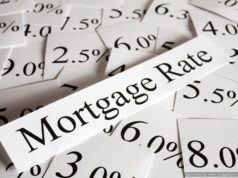 What does Amortization mean?
What does Amortization mean?
Amortization refers to the distribution of a single lump-sum cash flow into many smaller cash flow payments or installments, as determined through an amortization table or schedule.
In the most common of meanings, an amortization is a loan with a unique repayment structure. Unlike other repayment models, each repayment in an amortization consists of satisfying both the principal balance and the interest attached to the loan.
Amortization is primarily used in loan repayments, most commonly in mortgage loans or sinking funds. The payments are divided into equal amounts for the duration of the maturity schedule. As a result of this uniformity, the amortization is regarded as the simplest repayment model. That being said, a larger amount of the payment towards the amortization is applied to the interest of the loan at the beginning of the amortization schedule, while more money is used to satisfy the principal at the end of the amortization loan.
Negative Amortization:
In regards to finance, negative amortization occurs when the underlying loan payment for any period is less than the interest charged over that particular period. When this relationship takes place, the outstanding balance of the overall loan increases; the payment offered by the borrower isn’t enough to cover the interest payments so the principal is not affected and thus carries over the next installment.
The shorted amount in a negative amortization (the overall difference between the interest and the repayment schedule) is then added to the total amount owed to the underlying lender. This practice; however, must be agreed upon before the payment is shorted so as to avoid a total default on the loan obligation.
Negative amortization is typically used during an introductory period, before any loan payments may exceed the interest and the loan itself becomes self-amortizing.
Negative amortization occurs only in loans in which the periodic payments do not cover the amount of interest due for that specific loan period. The unpaid interest then compounds and is capitalized monthly into the overall remaining balance of the loan. As a result, the loan balance or principal increases by the amount of the unpaid interest and is divided on a monthly basis. The purpose of this feature is not to increase overall affordability, but to spark advanced cash management and simplify payment flexibility.
Negative amortization also contains a recast period and a recast principal balance cap based on particular state legislation. The recast period tied into negative amortization is typically 60 months or 5 years while the recast principal balance cap is usually up to a 25% increase of the loan balance over the original loan amount. Particular states and lenders may offer products with smaller recast periods and principal balance caps, but may not issue amortization loans that exceed their particular legislated requirements under the penalty of law.
Negative Amortization Circumstances:
All negative amortization home loans will eventually require the full repayment of the interest and principal according to the original terms of the mortgage agreement signed by the borrower. The majority of mortgages or long-term loans will only allow for negative amortization for no more than 5 years; all loans will have terms to recast the payment to a fully functional amortizing schedule if the borrower’s principal exceeds a specified amount.
A negative amortization often occurs when the loan is constructed in high cost areas because the monthly payments will be lower than other types of financing instruments.
A negative amortization loan can be viewed as high risk because these loans are typically safer in a falling rate market and riskier in a rising rate market.

































